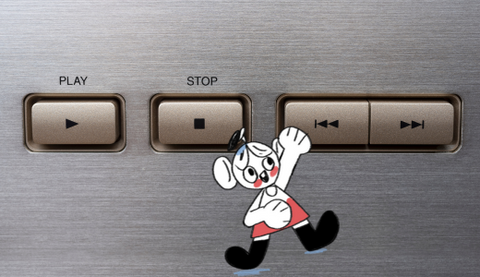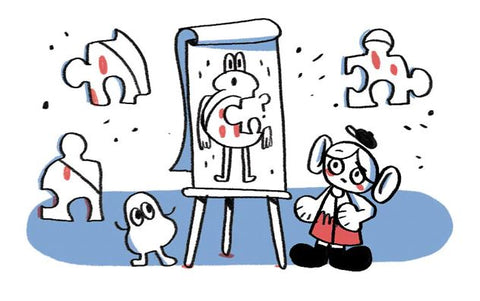So you’ve taken up the challenge to ‘ditch dull meetings’. You’ve got your Workshop Tactics cards lined up for an engaging session ahead.
You’ve put a lot of time and thought into this session, so once your guests have gathered - you’re ready to go!
But hold your horses.
Your participants have just come from who-knows where. An intense meeting (or two), a period of deep work or an intense problem-solving session. Perhaps even a two-week vacation. They haven’t put in the prep work that you have.
They’re not ready.
So what do you do?
Well, a quick check-in can be all it takes to shift their focus onto your objective for the session. It sounds simple, but it’s key to getting the most out of all the brains in the room.
Why check in during meetings?
It’s a bit like the morning commute; many work-from-homers found this ‘bridge’ between home and work helped them separate professional and domestic life. Many implement a short walk to emulate the effect now that they don’t have an office to get to. Check-ins are another form of bridging activity.
You can check in later on in the meeting, too! It’s a good way to move from one task to the next, and can help you increase engagement through active participation.
Is a check-in different to an icebreaker?
Icebreakers and check-ins have a similar purpose, and you can use one or both in your meetings. You’ll probably get a feel for which is which quite naturally: questions and activities that provide insights into the ‘status’ (emotional, energetic or engagement) of others are more likely to be check-ins, while icebreakers are less focussed and often don’t provide any insights (although they are still very, very useful!). You can use an icebreaker either before or after a check in; here’s a list of 17 icebreakers to try on for size.
Preparing to check in
It’s important to build an environment of psychological safety, so brief everyone on the ‘rules’ before you start. This can be something simple like “No ideas are bad ideas - if you have a criticism, hold onto it. Think outside of the box knowing that we’re a judgement-free zone; you never know what’s going to spark the next great idea.”. You can use the Session Principles tactic as a pretty great intro to your first session if you’ll be meeting with the same group regularly.
Why use check-in questions?
Using check in questions is one of the easiest and most effective ways to get everyone switched on, focussed and ready to share. You may think “That’s great, I’ll use the questions that work so well in our daily stand-up/huddle”.
On closer inspection, those questions are likely to have a very different purpose. They’ve been handpicked to get the most relevant information out of everyone quickly. Things like:
- What have we accomplished since the last meeting?
- What barriers are preventing us from doing more?
- What’s next on our action plan?
Mostly, they will be used in groups that already know each other and the project, and will be going straight back to their day job once the questions have been answered.
Your check-in questions, however, serve a very different purpose. Ideally, they will do one or more of the following:
- Help introduce the participants to each other
- Create a sense of team cohesion and safety
- Inject a little fun and energy into the session
The questions we described above aren’t the best options for this! So we’ll assume that the meeting you’re running is not an established, recurring status check, but is instead a one-off, kick-off, infrequent or new(ish) meeting, and get you set up with the tools you need to make it a great one.
Effective check-in questions for meetings
Just pick one question from the first section to get the ball rolling, then move onto another question that’s more specific to your meeting.
Starter check-in questions
- What’s your favourite thing you’ve worked on in the past month?
- What’s a talent you have that you don’t use in your day job?
- How energised about work are you feeling this week?
- What’s an upcoming work-related task that you’re looking forward to?
- How do you most like to work? You can give prompts: at home vs in the office, in silence vs surrounded by people, morning vs evening.
Meeting-specific check-in questions
- What are you hoping to get out of this project?
- What’s the biggest question you have about this meeting?
- If you could rename this project, what would you call it and why?
- If you had to swap the project leader for a famous person who you think could get the job done, who would you choose?
You can create your own check-in questions, too. Just make sure that you consider a) how many people are in the room and the time you have available, and b) how comfortable your guests will be with answering the question. The latter is particularly important if there will be very senior people in the room, attendees who manage other attendees present, or if anyone is new to the company or project.
Top tip: once you’ve done this, we’d recommend that you jump straight to explaining the objective of the meeting while you have everyone’s attention.
Check-in activities to kick off new projects
If you’re assembling a new project team, your first meeting together is full of possibilities! It’ll set the tone for the rest of the project and help to nurture positive working relationships. So run an icebreaker and then try one of these valuable activities that go beyond a few questions.
- Run a Skills Market - this way, you’ll see who knows what, who can support them and where there are opportunities for people to learn from each other. It’ll also help you spot any potential skills gaps that need filling.
- Try a 15-minute Meeting Wizard session to get everyone to collaborate on the structure, purpose and boundaries of the meeting.
- Get everyone to write down one (or three, for smaller groups) work-related facts about themselves on separate post-it notes, then as a group try to work out which person each fact belongs to. You can give prompts such as: “Your biggest professional achievement”, “Years worked in this industry”, “Your previous job least related to your current role” or “Biggest oops moment at work”.
You could also do a Premortem session to get everyone thinking creatively about all the things that could go wrong in a fun way, so that you can avoid them happening for real. It’s not included in the main list as it’s a bit of a stretch to call a one-hour session a ‘check-in activity'!
Why check out at the end of meetings?
Similarly to check-ins, you don’t want to turf your participants back out into the world at the end of the meeting with all those ideas still buzzing around in their heads. If they feel depleted or stressed after your session, they may not want to come back again!
But more importantly, the way you end a meeting can be a deciding factor when it comes to how many of the actions generated actually get completed.
So we’ve included some check-out activities, too. That will help everyone leave the room feeling positive and energised.
How to check out at the end of a meeting
Remember when we said to tell everyone the objective of the meeting right after you check in? Well, now’s your chance to see if you’ve achieved it. This is a good way to wrap up business before closing the meeting with a check out.
Check-out activities
If you’re hoping to see your project team at the same time next week (or whenever), you can opt for a slightly longer activity. Here are a few of our favourites:
- End with a Hopes and Fears session to find out what your team is excited and worried about when it comes to the project.
- Do a Who, What, When to ensure everyone leaves with a list of actions and deadlines fresh in their minds.
- Ask everyone what the most valuable take-away from this meeting is for them.
- Tell each person what you believe their best contribution to the meeting was.
As you progress through your project, you'll be able to come out with your own variations or completely new check-out activities to suit your context.
Remember, you’ll likely have plenty of opportunities to try out all of these check in/check out activities, and to create your own. Less is more, so don’t try to do too many at once.









